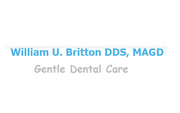
Most people have heard of gingivitis, a condition causing the gums to look red, feel tender, and bleed easily. However, many aren’t educated about gum disease in general. Without diligent home care and routine dentist visits, gingivitis will advance to the next stage, periodontitis, which is irreversible and includes more severe symptoms like gum recession and loose teeth. Here’s a closer look at this condition and what you can do to maintain a healthy mouth.
What You Should Know About Gum Disease
Causes
Numerous risk factors increase the chances of gum disease development, including hormonal changes, tobacco use, certain medications, genetics, and diabetes. However, the most common cause of the condition is poor oral hygiene, including failing to brush, floss, and see the dentist for routine cleanings. Bacteria accumulates in the mouth without proper oral hygiene and feeds on food particles, especially sugars and simple starches, to form acids and plaque that irritate gum tissue.
As plaque accumulation worsens, gingivitis develops. If daily home dental care and biannual professional cleanings aren’t implemented, the condition will advance to periodontitis.
Symptoms
 In addition to red, swollen, and bleeding gums, those with gum disease typically have persistent bad breath due to bacteria deposits. Chewing food can become painful because of tender gums, and pus can develop in the tissue as the condition worsens.
In addition to red, swollen, and bleeding gums, those with gum disease typically have persistent bad breath due to bacteria deposits. Chewing food can become painful because of tender gums, and pus can develop in the tissue as the condition worsens.
Once it has advanced to periodontal disease, common symptoms include bite problems and gum recession, in which gum tissue pulls away from teeth to create “pockets” that allow bacteria to thrive. Without treatment, the gums eventually recede so much that teeth loosen and will eventually fall out.
Treatment & Prevention
While gingivitis is easy to reverse with professional teeth cleanings and diligent home care, periodontal disease can only be managed. Treatment for the latter typically requires root planing and dental scaling, which may require more than one dentist appointment per procedure. Scaling involves removing plaque from teeth and within deep gum pockets while root planing is the process of smoothing tooth roots with a scaling tool to help them reconnect with the gums.
If teeth scaling and root planing are not enough to treat infected tissue, gum grafting may provide a solution. This process requires removing gum tissue from your palate or a donor to restore lost tissue. Dental implants may also be necessary to replace lost teeth.
Preventing gum disease requires brushing teeth twice a day for two minutes using a soft-bristled toothbrush and flossing once a day. When flossing, be sure to get below the gumline. Seeing the dentist twice a year for deep teeth cleanings and checkups is another powerful form of prevention. The professional will remove tartar from under the gumline and provide suggestions for avoiding gum problems, such as using an antibacterial mouthwash.
If you think you have gum disease or it’s simply time for your next cleaning and checkup, contact William U. Britton, DDS, MAGD. Offering pediatric, emergency, cosmetic, and general dentistry services, Dr. Britton has served residents throughout Jackson and Chillicothe, OH, for over 35 years. Call (740) 772-2225 to schedule an appointment or learn about gingival services online.
About the Business
Have a question? Ask the experts!
Send your question

